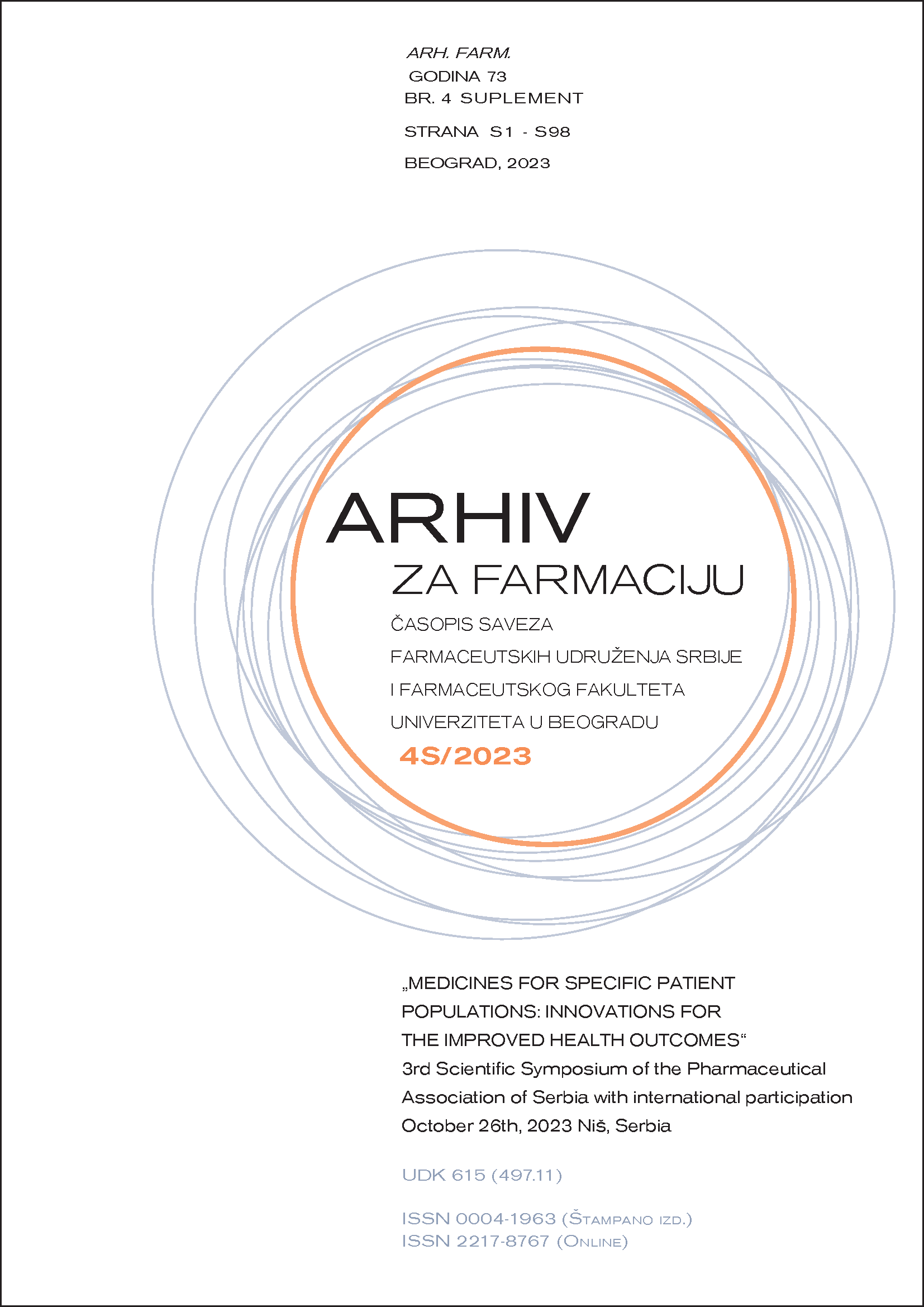IN VITRO ANTIDIABETIC POTENTIAL OF WILD ROSE
Abstract
Diabetes mellitus (DM) is a carbohydrate metabolism disorder linked to low blood insulin levels and insulin resistance, resulting in constant high blood glucose levels. It is estimated that 25% of the world's population is affected by DM, including developed and developing countries (1). Due to the increasing DM incidence, searching for new α-amylase and α-glucosidase inhibitors from plants is an appropriate replacement for synthetic ones. This study aimed to determine antidiabetic potential by evaluating the in vitro α-amylase and α-glucosidase inhibitory activity of extracts obtained from wild-growing Rosa micrantha Borrer (Rosaceae) species. Plant material was collected from Petnica village (Valjevo, Serbia). Ethanolic and water extracts of the leaves, hypanthium and achenes were prepared using ultrasonic-assisted extraction. Enzyme inhibitory potential was measured using the method with starch (α-amylase) and p-nitrophenyl-α-D-glucopyranoside (α-glucosidase) as substrate (2). The results were expressed as IC50 value (mg/mL) and compared with acarbose as a reference substance. Ethanolic leaf extracts had the highest inhibitory activity, 18.69 mg/mL for α-amylase and 0.74 mg/mL for α-glucosidase. In addition, ethanolic extracts obtained from achenes demonstrate significant inhibition on α-amylase and α-glucosidase at 21.02 mg/mL and 4.02 mg/mL, respectively. In contrast, the tested hypanthium extracts showed the lowest inhibitory activity, ranging from 26.90 to 72.51 mg/mL (α-amylase) and 6.41 to 8.39 mg/mL (α-glucosidase). Etanolic leaf extract had the similar α-glucosidase inhibitory activity as acarbose (0.42 mg/mL). The obtained results showed that R. micrantha extracts expressed high or moderate in vitro antidiabetic activity. Considering that plant extracts present a rich source of bioactive compounds, further investigation of antidiabetic potential of this wild-growing rose is needed.
References
1. Džamić, A. & Matejić, J. (2022) Plant products in the prevention of diabetes mellitus. Mini Reviews in Medicinal Chemistry, 22(10), 1395-1419.
2. Žarković, L., Mileski, K., Matejić, J., Gašić, U., Rajčević, N., Marin, P., & Džamić, A. (2022). Phytochemical characterisation, in vitro antioxidant and antidiabetic activity of Rosa arvensis Huds. extracts. Food Bioscience, 50, 102125.

